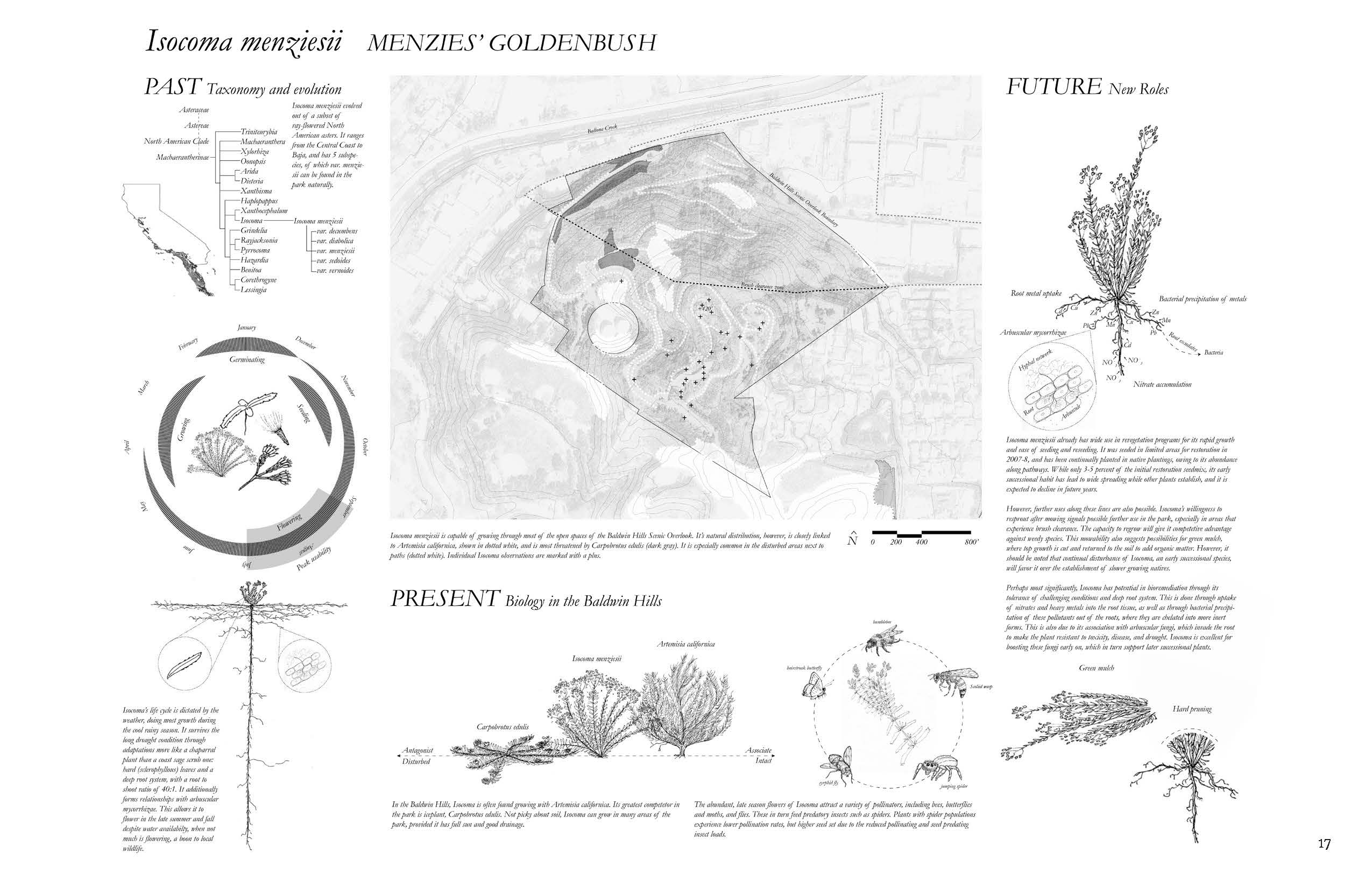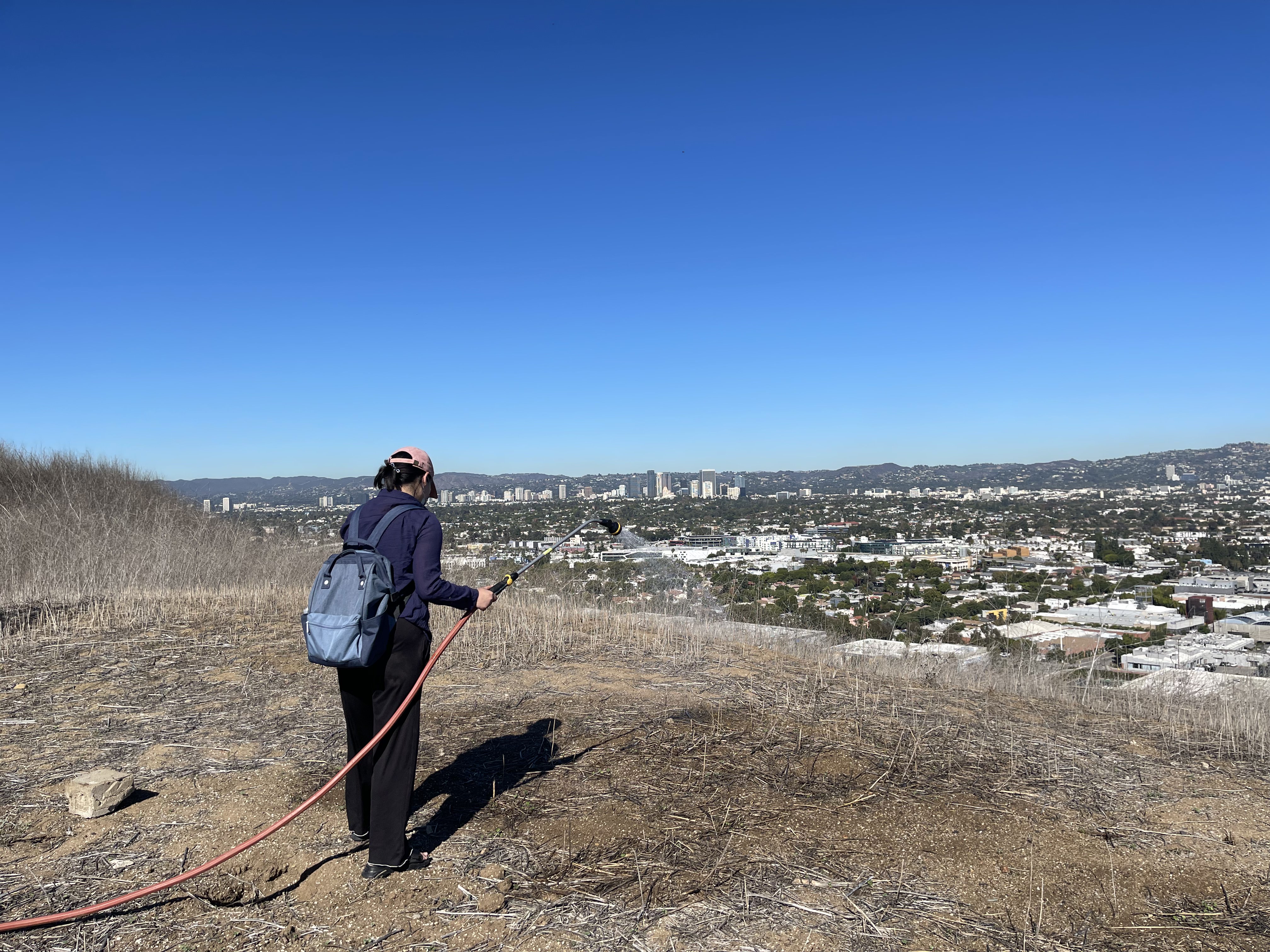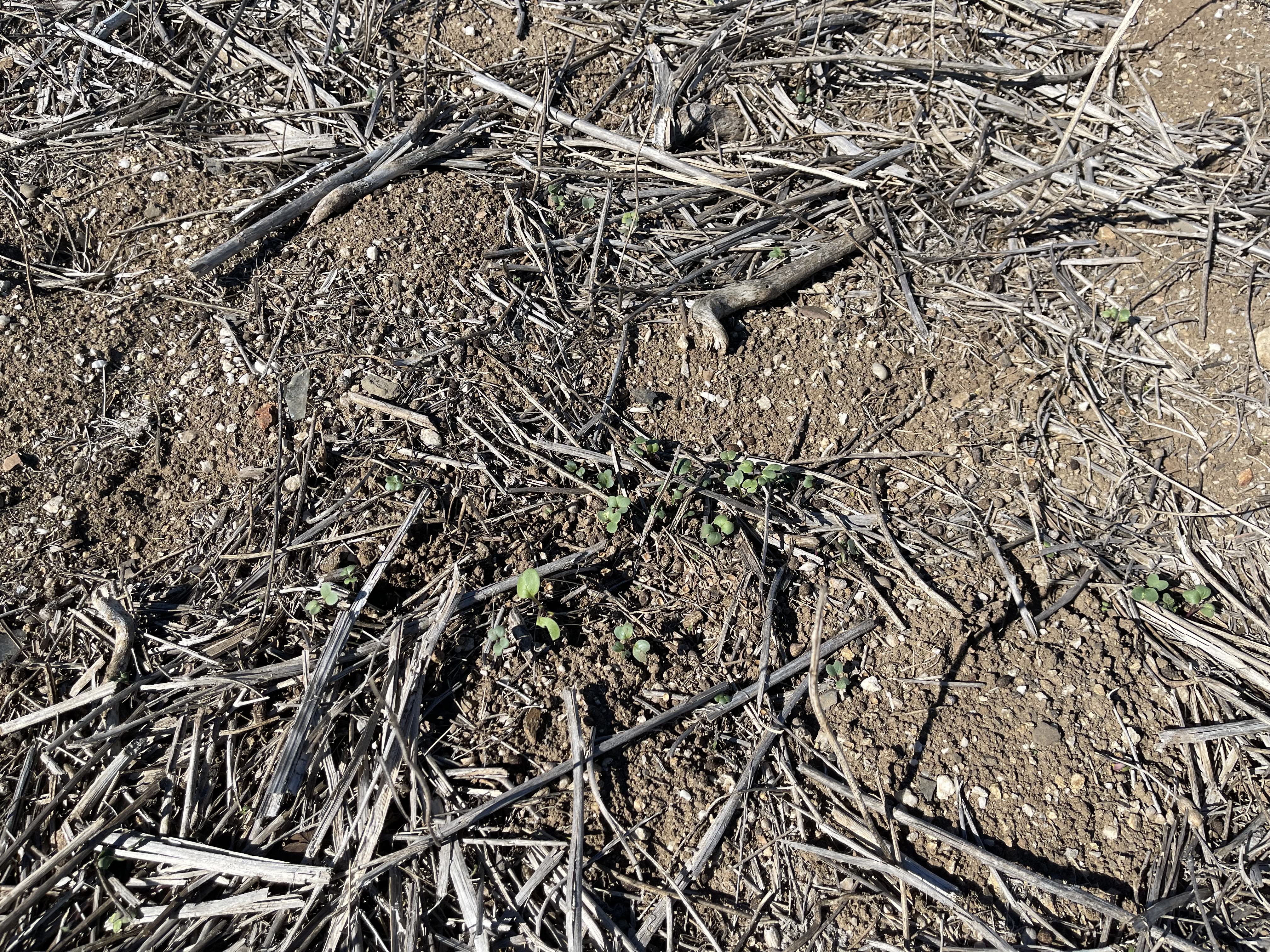THE PLOT WITH THE VIEWS
Starting Baldwin Hills / Fall 2021
By Daniela Velazco
Test Plot Intern
The Baldwin Hills Test Plot came together through a collaboration between the Nature Nexus Institute, USC Landscape Architecture graduate students, and local high school students and volunteers.
![]()
![]()
![]() The folks at Nature Nexus Institute have worked hard to take the hills from largely overrun by non-native invasive species to hills of coastal sage scrub habitat patchworked throughout the park. With their help, we turned a 5,000 square foot area near the top of the hill by the Skyline Terrace Amphitheater from a field of mustard into a testing site for speculative climate futures.
The folks at Nature Nexus Institute have worked hard to take the hills from largely overrun by non-native invasive species to hills of coastal sage scrub habitat patchworked throughout the park. With their help, we turned a 5,000 square foot area near the top of the hill by the Skyline Terrace Amphitheater from a field of mustard into a testing site for speculative climate futures.
Below is a breakdown of what was done.
1. Prep the site.
The staff at the Nature Nexus Institute hand pulled wild mustard in early August. They left a few bladderpod plants, black sages, a tobacco tree (home to a resident hummingbird) and a large white sage.
![]()
![]()
![]() 2. MLA graduate students visited the site to prepare for research on the site’s current ecology/ historic ecology and site uses.
2. MLA graduate students visited the site to prepare for research on the site’s current ecology/ historic ecology and site uses.
![]()
![]()
![]()
![]()
![]() 3. In late August we started a grow/kill cycle to stimulate the many years of seeds below ground in the seedbanks. We watered the site weekly and once the plants (mostly black mustard) began to sprout we’d weed and water again.
3. In late August we started a grow/kill cycle to stimulate the many years of seeds below ground in the seedbanks. We watered the site weekly and once the plants (mostly black mustard) began to sprout we’d weed and water again.
![]()
![]()
![]()
![]()
*A note on black mustard: black mustard is an extremely resilient non-native brought to California from Europe. The plant with the huge green leaves with yellow flowers that covers the Los Angeles hillsides in the Spring. It does extremely well in nitrogen areas thriving off the nitrogen from our car exhaust pipes. It grows faster than our native species, choking them out before they’ve had a chance to grow. By removing it and planting natives, we are creating more much needed habitat that local species need to survive. It was also a huge fire hazard!
4. The Test
Climate experts predict a future of more extreme weather events. As we’ve seen this year, this can mean heavier rainfall, storms, and/or longer drought. As a studio class we developed a test based on these predictions using the selected species and planting strategy as variables for the site.![]() We landed on a strategy that takes 3 different California native plant communities and intermixed them on site.
We landed on a strategy that takes 3 different California native plant communities and intermixed them on site.
-Oak woodland based on the historic ecology of the north facing slope
-Coastal sagescrub based on the sites current ecosystem
-Grassland, a plant community that thrives in disturbance
The intent is that the diverse initial planting palette will allow the land to sort out into the appropriate future community makeup.![]()
![]()
![]()
Starting Baldwin Hills / Fall 2021
By Daniela Velazco
Test Plot Intern
The Baldwin Hills Test Plot came together through a collaboration between the Nature Nexus Institute, USC Landscape Architecture graduate students, and local high school students and volunteers.


 The folks at Nature Nexus Institute have worked hard to take the hills from largely overrun by non-native invasive species to hills of coastal sage scrub habitat patchworked throughout the park. With their help, we turned a 5,000 square foot area near the top of the hill by the Skyline Terrace Amphitheater from a field of mustard into a testing site for speculative climate futures.
The folks at Nature Nexus Institute have worked hard to take the hills from largely overrun by non-native invasive species to hills of coastal sage scrub habitat patchworked throughout the park. With their help, we turned a 5,000 square foot area near the top of the hill by the Skyline Terrace Amphitheater from a field of mustard into a testing site for speculative climate futures.Below is a breakdown of what was done.
1. Prep the site.
The staff at the Nature Nexus Institute hand pulled wild mustard in early August. They left a few bladderpod plants, black sages, a tobacco tree (home to a resident hummingbird) and a large white sage.








- diagram by Lara Lebeiko
*A note on black mustard: black mustard is an extremely resilient non-native brought to California from Europe. The plant with the huge green leaves with yellow flowers that covers the Los Angeles hillsides in the Spring. It does extremely well in nitrogen areas thriving off the nitrogen from our car exhaust pipes. It grows faster than our native species, choking them out before they’ve had a chance to grow. By removing it and planting natives, we are creating more much needed habitat that local species need to survive. It was also a huge fire hazard!
4. The Test
Climate experts predict a future of more extreme weather events. As we’ve seen this year, this can mean heavier rainfall, storms, and/or longer drought. As a studio class we developed a test based on these predictions using the selected species and planting strategy as variables for the site.
 We landed on a strategy that takes 3 different California native plant communities and intermixed them on site.
We landed on a strategy that takes 3 different California native plant communities and intermixed them on site. -Oak woodland based on the historic ecology of the north facing slope
-Coastal sagescrub based on the sites current ecosystem
-Grassland, a plant community that thrives in disturbance
The intent is that the diverse initial planting palette will allow the land to sort out into the appropriate future community makeup.


